
Anesthesia & Clinical Research
Open Access
ISSN: 2155-6148

ISSN: 2155-6148
Research Article - (2021)Volume 12, Issue 10
Modified Radical Mastectomy (MRM) is the most common surgical procedure for operable breast malignancies. Various strategies like non-steroidal anti-inflammatory drugs, opioids, peripheral nerve blocks, wound infiltration with local anaesthetics, thoracic epidural anaesthesia were found to have significantly improved the postoperative pain. An alternative technique that has widespread applicability is the insertion of catheters to allow for continuous infusions of local anaesthetics into the surgical wound at the end of the procedure. Continuous wound irrigation catheters with local anaesthetic drugs confer several benefits, including improved analgesia, reduced opioid use and its side effects, increased patient satisfaction and reduced hospital stay. Direct application of local anaesthetic to wounds directly block transmission of pain from nociceptive afferents from the wound surface; reduce release of inflammatory mediators from neutrophils, reduce neutrophil adhesion to the endothelium, reduce formation of free oxygen radicals and decrease oedema formation.
Modified radical mastectomy; Analgesia; Drugs; Cancer; Surgery
Infiltration of local anaesthetic along the line of incision is not recommended in malignant lesions, because of the fear of needle track seedlings and cutaneous spread of malignancy. The aim of the present study was to assess the role of wound irrigation with bupivacaine through surgical drains in alleviating early postoperative pain after the MRM.
Breast cancer is the most common female cancer worldwide representing nearly a quarter (25%) of all cancers with an estimated 1.67 million new cancer cases diagnosed in 20124. Breast cancer has ranked number one cancer among Indian females with age adjusted rate as high as 25.8 per 100,000 women and mortality 12.7 Per 100,000 women. Breast surgery can be emotionally distressing and physically painful. Acute pain following surgery is often related mainly to the axillary surgery and is aggravated by arm and shoulder movement.
Effective postoperative analgesia is important from the patient’s perspective and can also improve clinical outcomes. Recent surveys report only modest success providing suitable analgesia, as 30% to 86% of surgical patients report moderate to severe pain after a surgical procedure. Although “advanced” analgesic techniques such as epidural analgesia or perineural catheters, can provide superior analgesia, many of these analgesic modalities are labour-intensive and expensive [1]. A promising modality that might help improve postoperative analgesia is the relatively simple technique in which the surgeon directly places a catheter to infuse local anaesthetic into wounds at the end of the procedure. This modality can be widely used, is technically efficient, offers the potential to provide complete analgesia or to substantially reduce the need for opioids and their related side effects, can be used for several days, and can now, with the introduction of new portable pumps, be used on an ambulatory basis [2]. Surgery and inflammation that follow the intervention activate peripheral nociceptors in the skin, ligaments and muscles. A noxious stimulus is propagated by thin, unmyelinated C type fibres and thinly myelinated A-delta fibres to the central nervous system. Postoperative pain after breast surgery is one of the major factors contributing to delay in mobilisation and prolonged hospital stay.
Aim and objectives
To assess the postoperative analgesic effect of wound irrigation with 0.25% bupivacaine through surgical wound after MRM.
Relevance
The present study was to assess the role of wound irrigation with bupivacaine through wound irrigation catheter in alleviating early postoperative pain after the MRM. This study would provide good understanding of the sufferings of a patient undergoing a major surgery and provide an effective pain alleviation method for it. Hence this study can be used in future application of the said method in post MRM patients.
Study design
A Longitudinal observational study.
Study setting
MES Medical College, Department of Anaesthesiology.
Study population
Patients undergoing Modified Radical Mastectomy in MES Medical College, Perinthalmanna.
Sample size
The data from MRD in MES Medical College showed that there were cases of MRM in previous year. So we enrolled 30 patients in our study. A purposive sample of 30 patients was studied.
Sampling procedure
Convenient sampling procedure was utilized.
Study duration
The data was collected from 1st January 2017 to 31st July 2018, a total duration of one and a half years.
Inclusion criteria
Patients posted for MRM satisfying American Society of Anaesthesiologists (ASA) physical status I, II and III.
Exclusion criteria
Patients with history of adverse drug reaction to local anaesthetics; clinically significant hepatic, neurologic and psychiatric disease and patients with history of chronic analgesic drug usage were excluded.
Study tools
Informed Consent Form Proforma
Data collection
This observational study was carried out in patients after obtaining written informed consent and applying inclusion and exclusion criteria. All patients underwent a prescribed standard anaesthetic protocol.
Patients underwent general anaesthesia with balanced anaesthesia endotracheal intubation. Before closure of the wound, a 20 G scalp vein set was used to prepare for continuous irrigation catheter. Using sterile technique, length of the incision was measured, and multiple puncture was given starting from distal end of scalp vein set; length of which will be equal to the incision length. Distal end was cut and closed. This catheter was placed subcutaneously, and wound was closed. 10 ml 0.25% bupivacaine was given and patient was reversed. Later patient was shifted to postoperative unit. Continuous wound irrigation was given using 0.25% bupivacaine at 0.04 ml/kg/hour for 24 hours. Pain score was noted sixth hourly in a Visual Analogue Scale (VAS). If the VAS exceeded '4' at any point of time, rescue analgesia with IV tramadol 1 mg/kg was administered. The number of demands and the total cumulative analgesic requirement was noted for 24 hour. Surgical site related untoward effects like haematoma, infection and wound dehiscence was observed clinically till the patient isdischarged (Figure 1).
Statistical analysis
Data was coded and entered in MS excel and analysis was done using Epi-Info (version 7). Descriptive analysis was done. Proportions were expressed in percentage. Mean and standard deviation calculated for continuous variables. Chi-square/ Fischer exact test was done to look for associations between categorical variables.
Ethical consideration
• Written informed consent form will be obtained from the care givers before the study.
• Institutional Scientific and Ethical committee clearance obtained.
This was a longitudinal observational study done in the Department of Anaesthesiology MES Medical College, Perinthalmanna. The study was conducted among patients undergoing Modified Radical Mastectomy, a total of 30 patients were included in the study.
Baseline characteristics
Age distribution: The age of participants ranged 43 to 69 years and mean age 56.3 years (SD=7.68) (Tables 1-6 and Figures 1-5).
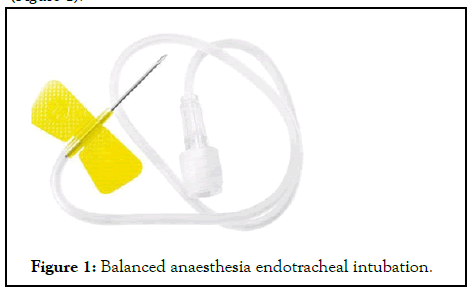
Figure 1: Balanced anaesthesia endotracheal intubation.
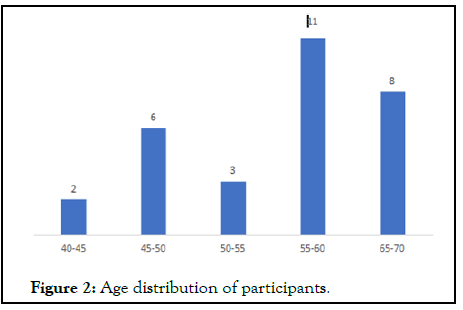
Figure 2: Age distribution of participants.
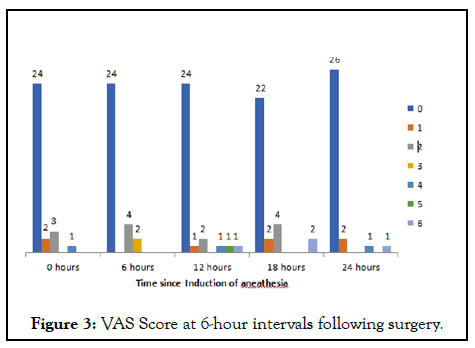
Figure 3: VAS Score at 6-hour intervals following surgery.
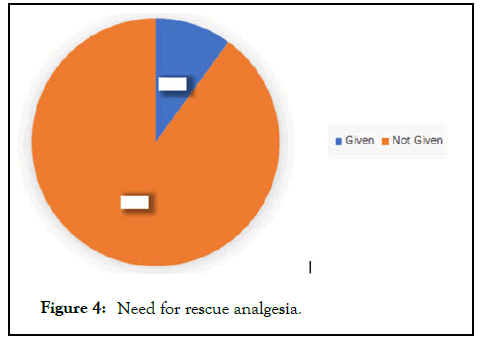
Figure 4: Need for rescue analgesia.
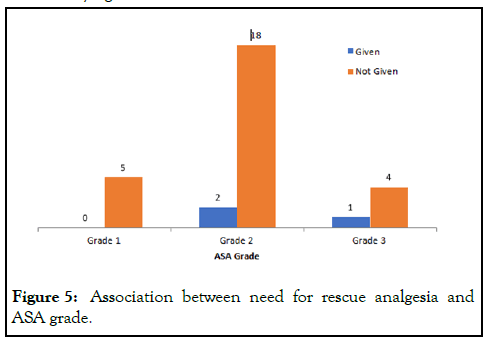
Figure 5: Association between need for rescue analgesia and ASA grade.
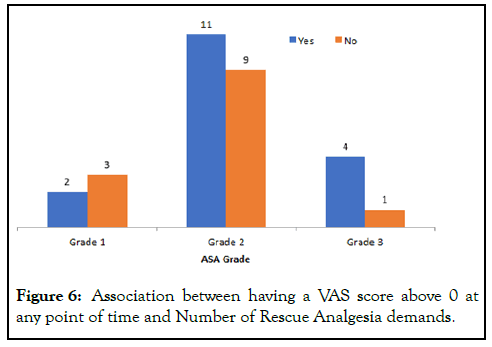
Figure 6: Association between having a VAS score above 0 at any point of time and Number of Rescue Analgesia demands.
| Age group in years | Frequency | Percent |
|---|---|---|
| 40-45 | 2 | 6.7 |
| 45-50 | 6 | 20 |
| 50-55 | 3 | 10 |
| 55-60 | 11 | 36.7 |
| 65-70 | 8 | 26.7 |
| Total | 30 | 100 |
Table 1: Age distribution of participants.
| Grade | Frequency | Percent |
|---|---|---|
| 1 | 5 | 16.7 |
| 2 | 20 | 66.7 |
| 3 | 5 | 16.7 |
| Total | 30 | 100 |
Table 2: ASA physical grading classification system.
| Class | Frequency | Percent |
|---|---|---|
| 1 | 9 | 30 |
| 2 | 13 | 43.3 |
| 3 | 8 | 26.7 |
| Total | 30 | 100 |
Table 3: Modified Mallampati classification is a simple scoring system.
| VAS | 0 hours | 6 hours | 12 hours | 18 hours | 24 hours | |||||
|---|---|---|---|---|---|---|---|---|---|---|
| score | n | % | n | % | n | % | n | % | n | % |
| 0 | 24 | 80 | 24 | 80 | 24 | 80 | 22 | 73 | 26 | 87 |
| 1 | 2 | 6.7 | - | - | 1 | 3.3 | 2 | 6.7 | 2 | 7 |
| 2 | 3 | 10 | 4 | 13.3 | 2 | 6.7 | 4 | 13 | - | - |
| 3 | - | - | 2 | 6.7 | - | - | - | - | - | - |
| 4 | 1 | 3.3 | - | - | 1 | 3.3 | - | - | 1 | 3 |
| 5 | - | - | - | - | 1 | 3.3 | - | - | - | - |
| 6 | - | - | - | - | 1 | 3.3 | 2 | 6.7 | 1 | 3 |
| Total | 30 | 100 | 30 | 100 | 30 | 100 | 30 | 100 | 30 | - |
Table 4: VAS Score at 6-hour intervals following surgery.
| VAS score above 0 at any | Frequency | Percent |
|---|---|---|
| Point of time | ||
| Yes | 17 | 56.7 |
| No | 13 | 43.3 |
| Total | 30 | 100 |
Table 5: Participants who gave a VAS score above 0 at any point of time.
| Hours interval | Mean | Std. Deviation | Minimum | Maximum |
|---|---|---|---|---|
| 0 hour | 0.71 | 1.16 | 0 | 4 |
| 6 hour | 0.82 | 1.185 | 0 | 3 |
| 12 hour | 1.18 | 1.976 | 0 | 6 |
| 18 hour | 1.29 | 1.961 | 0 | 6 |
| 24 hour | 0.71 | 1.687 | 0 | 6 |
Table 6: Mean VAS Score of Participants who gave a VAS score above 0 (n=17).
The mean weight was 58.13 kg (SD=10.02); and ranged from 45 to 81 kg.
ASA grading
The ASA grading was done on the patient pre-op and 5 patients were in Grade 1 (A normal healthy patient) and 20 patients in Grade 2 (A patient with mild systemic disease) and 5 patients in Grade 3.
Mallampati score (MPC)
The MPC score was done on the patient pre-op and 9 patients were in Class I, followed by Class 2 in 13 patients and Class 3 in 8 patients.
VAS score at 6-hour intervals following surgery
The VAS Score at intervals of six hours showed that the score of zero was fluctuating over the hours and number of people with it increased at 24 hours. Rest of the values also improved. At 12 hours there were more people with 4, 5 and 6 VAS scores.
Around 17 patients (56.7%) scored a VAS score above 0 at one point or the other during the study.
The difference between mean operation time for those who requires rescue analgesia and those who did not was not statistically significant.
Management of acute postoperative pain is required for better outcome and patient’s satisfaction. Regional techniques are regarded as the best choice to reduce acute postoperative pain and incidence of chronic pain after breast surgery [3]. Perioperative analgesia has traditionally been provided by opioid analgesics. Large doses of opioids can be associated with an increased incidence of postoperative complications: Respiratory depression, sedation, nausea and vomiting, pruritus and ileus. Anaesthesiologists and surgeons are increasingly turning to nonopioid analgesic techniques for managing pain during the perioperative period in order to minimize the adverse effects of analgesic medications. Local anaesthetics can improve postoperative pain management. Management of acute postoperative pain is required for better outcome and patients' satisfaction [4]. Regional techniques are regarded as the best choice to reduce acute postoperative pain and incidence of chronic pain after breast surgery. Perioperative analgesia has traditionally been provided by opioid analgesics [5]. Large doses of opioids can be associated with an increased incidence of postoperative complications: Respiratory depression, sedation, nausea and vomiting, pruritus and ileus. Anaesthesiologists and surgeons are increasingly turning to non-opioid analgesic techniques for managing pain during the perioperative period in order to minimize the adverse effects of analgesic medications.
Local anaesthetics can improve postoperative pain management. They suppress the afferent nociceptive signal and inflammatory reaction. Local anaesthetics for postoperative analgesia are used in many fields of surgery: Orthopaedics, abdominal surgery, gynaecology, urology, cardiothoracic surgery and breast cancer surgery. The rates of inflammation or hematomas were not higher after the use of local anaesthetics comparedto the placebo or standard analgesia treatment groups [6]. Local anaesthetics seem to reduce the occurrence of inflammation. Continuous administration of local anaesthetics into the wound via a catheter placed directly at the end of surgery represents a simple and efficacious means to provide postoperative analgesia Jacobs and Morrison reported the results of a retrospective study, where the wound catheter was connected to an elastomeric pump containing local anaesthetic. They found out that this type of analgesia was safe and reduced postoperative pain.
In our study the VAS Score at intervals of six hours showed that the score of zero was fluctuating over the hours and number of people with it increased at 24 hours. Rest of the values also improved. At 12 hours there were more people with 4, 5 and 6 VAS scores. Duration of surgery ranged from 130 to 195 minutes, with a mean of 160.5 minute. Only one patient complained of PONV [7]. The difference between mean operation time for those who requires Rescue analgesia and those who did not was not statistically significant. There was no significant association between need for rescue analgesia and Mallampati Class, ASA grading, PONV, age of the patients and VAS score. There was no significant association between VAS score and age of the patients, MPC class, ASA grade, number of rescue analgesia demands and Post-operative nausea and vomiting which was seen similar to the reviewed. It was observed that after major abdominal surgery, repeated instillation of the 0.25% bupivacaine solution through a patient-controlled analgesic device and a dual-catheter system did not decrease postoperative pain or opioid requirements [8]. In this case, the authors considered that the lack of uniform distribution, or rather the spread of the drug was unpredictable and that the dose of local anesthetic was insufficient. However, there is little literature on its use in MRM procedure. In a breast reconstruction, levobupivacaine was injected locally every 3 hour as a supplement to oral paracetamol and PCA-administered morphine produced better pain relief at rest and during mobilization; morphine consumption was reduced, but this was not significant (p=0.28).
A prospective, double-blind, randomized, placebo-controlled trial on 42 patients after a modified radical mastectomy [9]. They did not find any difference in analgesia between the treatment groups, which received levobupivacaine irrigation through the axillary wound drain every four hours for the first 24 hours postoperatively, and the control group, which received irrigation with normal saline. Instead of perforated catheters, they used axillary drains, which were clamped for 20 minutes every four hours following the application. Thus, a local anaesthetic was not administered continuously. Patients with a continuous infusion of local anaesthetic had a lower consumption of opioids and a reduced need for antiemetic drugs compared to the standard opioid-based analgesia group of patients [10]. These results are in accordance with the conclusions of the majority of investigators who studied the role of local anaesthetics in postoperative pain management.
The irrigation of wound with local anesthetics is a simple, effective and economical way to provide good analgesia to patients who are undergoing MRM procedure without significant side effects. Wound infection and healing do not seem to be a major concern. Local anesthetics are generally well tolerated, provided they are used correctly and in the proper dose. This postoperative analgesic technique can be included in the therapeutic armamentarium of multimodal analgesia. The application of a wound irrigation catheter with a local anaesthetic is safe, easy and effective for reducing acute postoperative pain. Continuous infusion of a local anaesthetic into the wound reduces opioid consumption and results in less postoperative sedation and a reduced need for antiemetic drugs. The patients are more alert, pain free, less respiratory compromise and consequently, do not need.
Citation: Shafi MC (2021) Assessment of Post-Operative Analgesia in Modified Radical Mastectomy Patients Using Surgical Wound Irrigation with 0.25% Bupivacaine. J Anesth Clin Res. 12:1032.
Received: 07-Oct-2021 Accepted: 21-Oct-2021 Published: 28-Oct-2021 , DOI: 10.35248/2155-6148.21.12.1032
Copyright: © 2021 Shafi MC. This is an open-access article distributed under the terms of the Creative Commons Attribution License, which permits unrestricted use, distribution, and reproduction in any medium, provided the original author and source are credited.